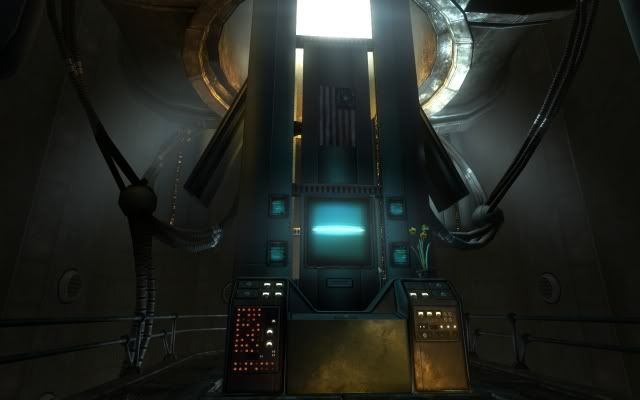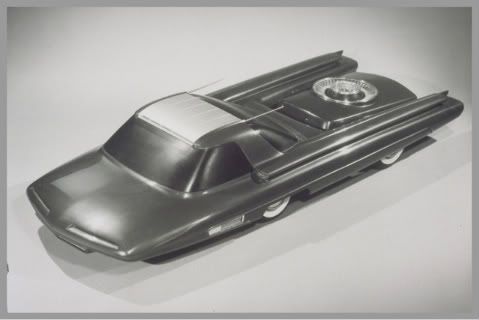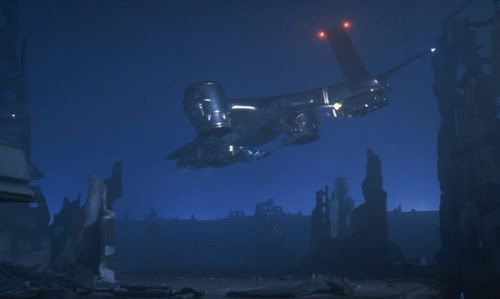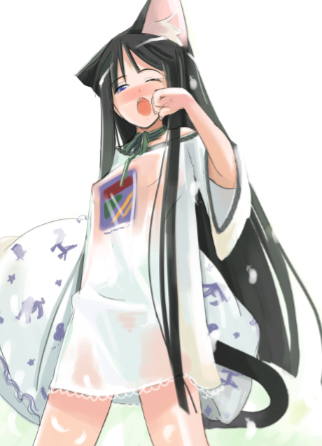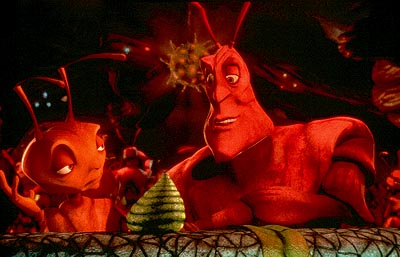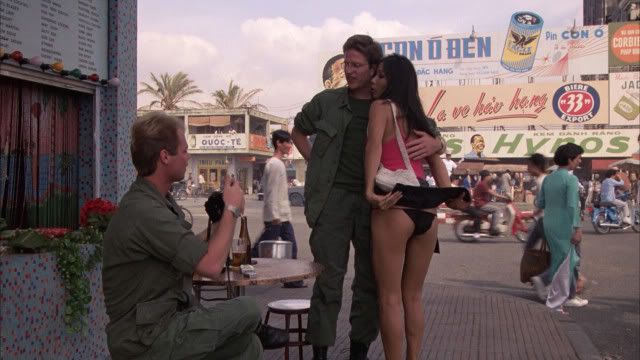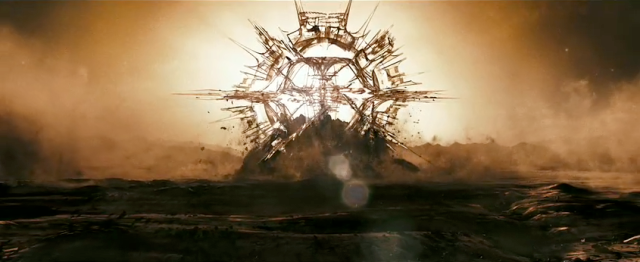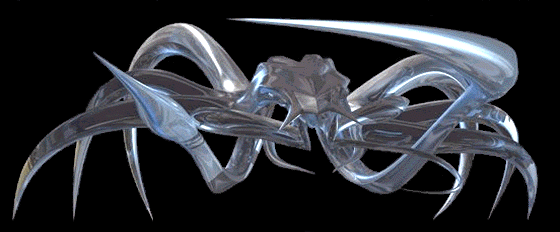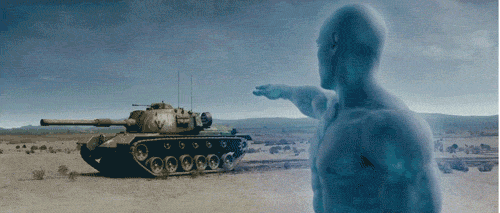Simon Jester was a tremendous help with this post. He actually read through the entire thing pointing out and rewriting places that were rough and lending his own thoughts towards the analysis that I had made. He also BBCoded the entire thing. Thank you Simon!
1. Preface to the D.A.L.E Report: Naval Capabilities and Doctrines.
1.1. Explanation of the classification system used to categorize foreign polities.
1.2. A brief breakdown of the Stefan-Wylkins Scale of Composite Capabilities and Cost (SCCC)
1.3. Overview of the three Naval points of view.
1.3.1. Super-dreadnought and heavier PoV
1.3.2. Light and Ultra-Light Swarms PoV
1.3.3. Mixed Fleets PoV
2. Foreign Polities classified, examined and planned for.
2.1. Listing of Nations by their Threat Classification
2.2. Detailed examination of known capabilities and attitudes of other nations.
3. Review of capabilities, doctrines and deployments of the HCN.
3.1. Review of current classes of ships on active duty with the HCN.
3.2. Review of doctrinal procedures for current HCN vessels.
4. Projections and suggestions for the HCN over the next 5 years.
4.1. New vessels to counter emerging threats.
4.2. New doctrine to maximize units currently available.
4.3. Exploration of possible designs to specifically counter enemy warships with an SCCC over 1000.
1.Preface to the D.A.L.E Report: Naval Capabilities and Doctrines.
1.Explanation of the classification system used to categorize foreign polities.
Having examined the nations of known space, a classification system was established to help determine which nations posed the greatest threats to the Hiigaran peoples. This system of rating threats is based on known capabilities of naval assets, proximity to Hiigaran space, current relations between Hiigara and the nation, ideological stance, and historical dispositions towards the Hiigaran peoples.
2.The classifications are as follows:
1. Class A Threats:
Nations that have naval capabilities rivaling that of the HCN, special note is given to whether or not they significantly outweigh Hiigaran vessels or significantly outnumber Hiigaran vessels of the same rough capabilities as defined by the Stefan-Wylkins SCCC. Nations classified as Class A threats are also in fairly close proximity to the Hiigaran sphere of influence (SoI), non-existent or hostile relations, wholly incompatible ideologies and a historical predisposition for conflict with the Diamid.
2. Class B Threats:
Nations that have naval capabilities rivaling that of the HCN, special note is given to whether or not they outweigh/outnumber the HCN in vessels based on the Stefan-Wylkins SCCC. Nations that are further away from the Hiigaran SoI, have less hostile or indifferent relations, and/or are willing to overlook differences in ideologies for mutual benefit or have compatible ideologies. Also nations with a historical precedent of neutrality towards the Diamid.
3. Class C Threats:
Nations that have naval capabilities rivaling that of the HCN, or are smaller yet close enough to Hiigaran SoI to allow for sustained small scale operations. Nations that are too far away to sustain campaigns against the Hiigaran SoI, in any strength are also placed in this category. Nations that have a similar ideologies or historical precedents of friendship with the Diamid.
4. Class D Threats:
Nations that are too far away, too small or extremely friendly with the Hiigaran nation to be considered a serious threat.
2. A brief breakdown of the Stefan-Wylkins Scale of Composite Capabilities and Cost (SCCC):
The Stefan-Wylkins Scale of Composite Capabilities and Cost, also known as the S-W SCCC, is universal method for the comparison of everything from national wealth to the respective capabilities of warships and troop formations. No one is quite certain where this system originated or who Stefan and Wylkins were, or why everyone uses it from the U.N. and the human nations to the Bragulans and the Karlacks. This report is focused on military capabilities of possible threats to the Hiigaran Diamid, so will only focus on the subset of classifications used in determining relative capabilities of warships. Every combat capable ship in the galaxy is given a S-W number, from the smallest drone fighters of the Umerian Space Security Forces to the colossal Collector Monoliths. This number is determined by the defensive and offensive capabilities, plus the speed and maneuverability of the ship. This allows for a great deal of difference between classes that have an identical or similar S-W number.
3.Overview of the three Naval points of view.
1.Super-dreadnought and heavier PoV.
This school of thought espouses extremely heavy warships that can take on whole squadrons of lesser ships on their own. Advocates of this school preach that quality and superior firepower are the keys to triumph. There are several advantages to fielding warships with this kind of durability and firepower (~>700 S-W). Often times they can destroy smaller ships with just a few salvos from their main batteries, and they typically boast shielding and armor such that smaller ships operating singly can barely scratch the hull. However there are drawbacks. Sufficient numbers of lighter vessels can mob one of these Super-Capitals and through sheer numbers worry it to death. These ships take a tremendous amount of resources and time to construct, so any losses to they take can leave a large hole in the owner's navy. Their sheer cost ties up resources that could have been spent on smaller escorts which can be built much faster and in larger numbers. Smaller vessels are also the work horses of a stellar navy as they're the ones that do the scouting, screening, patrolling and a myriad of other less than glamorous tasks. Concentrating on building Super-Capitals means fewer of these vital light vessels which can mean holes in recon, patrol and capital screen coverage.
2.Light and Ultra-Light Swarms PoV.
This school of thought espouses large numbers of smaller vessels generally ranging from fighters, gunboats and ships from 20 S-W to 150 S-W supported by a handful of Super-Capital class vessels. The proponents for this doctrine cite the sheer coverage these lesser ships can give, plus the relative ease of replacing losses as the reasons for the superiority of this concept. They also point out that in sufficient numbers these ships can bring down any vessel no matter how powerful. Opponents point to the fact that against navies with heavier warships losses would be catastrophic due to the fact that Super-Capitals can easily destroy individual vessels.
3.Mixed Fleets PoV.
This school points the flaws in the previous two theories and strives to find a balance between Super-Capitals and light vessels. Properly executed, this doctrine can allow a navy to field sufficient number of light ships to adequately cover territorial claims, provide screens for Wall elements and carry out reconnaissance duties. These duties are all met while still fielding sufficient Super-Capital vessels to stand up to Super-Dreadnought navies or inflict heavy casualties on navies that use Swarming tactics. This balanced fleet is the goal of the HCN.
2.Foreign Polities, Classified, Examined and Planned For.
1.Listing of Nations by their Threat Classification
1. Current Class A Threats:
1. The Collectors
2. The Karlack Swarm
2. Current Class B Threats:
1. Bragulan Star Empire
2. Imperium of Man
3. United Solarian Sovereignty
3. Current Class C Threats:
1. The League of Free Stars
2. The Refuge
3. The Empire Star Republic
4. The Technocracy of Umeria
5. The Altacar Empire
6. The Prussian Star League
7. The Sassanid Empire
8. The Union State of Four Stars
9. The Shepistani Republic
4. Current Class D Threats:
1. The United Star Kingdom of New Anglia
2. The Federated Ascendancy
3. The Fourth French Empire
4. The Holy Empire of Haruhi Suzumiya
5. Tianguo
6. The United Corporate Front
7. The Multiversal Empire of Happiness
8. The Servian Republic
9. The Central Alliance
10. The Chamarran Hierarchy
11. The Emissarries of XylyX
12. The Iduran Confederation
13. The Covenant of the Void
14. The Centrality
15. The Argenti Federation
16. The R'nish Aggregate
17. The Knights of Order
18. The Sultanate of Klavostan
19. The Technosocialist State of Ranoidea
20. The Grand Dominion
21. The Cevaucian Asendancy
22. The Federal Republic of Industrial Sectors
23. The Orks!*
24. The Pfhor Empire
25. The Shinra Republic
26. The Interstellar Union of Worlds
27. The Chiron Sovereignty
28. The Trichermphiles Democratic Republic
29. The Eoghan United Commons
30. The Commune
31. The Humanist Union
32. The Kryptonian Empire
33. The United Sectors
34. The Nova Atlantean Commonwealth of Worlds
*Note: This refers exclusively to the major ork polities far to antispinward, not to smaller less organized orkish threats in Hiigara's immediate neighborhood.
2. Detailed examination of known capabilities and attitudes of other nations.
1. Class A Threats
1. The Collectors
There is little known about the Collectors, their agenda, or their capabilities. Of their goals and intentions we know nothing at all except that they appear interested in acquiring items based on no known or reliably extrapolated criteria. Of their military, little is known beyond the fact that their Monoliths are the most powerful ships ever encountered in known space. With an unknown number of ships with an S-W rating of over 9,000, the ease of which they move through shoal regions, their unknown intentions, and the relative closeness to our own spheres of influence, the Collectors one of the greatest possible threats to Hiigaran interests and territory.
Unfortunately we have limited intelligence on the Collectors, making it difficult to formulate defensive strategies other than massing as much firepower as possible against any Collector incursion. One relevant consideration is that their drives make use of unknown technologies to travel at higher speed in shoals, at the price of lower speed in open hyperspace. This gives the HCN an advantage in strategic mobility during action against Monoliths, making concentration of force against them easier.
2. The Karlack Swarms
The Karlack Swarms are a significant threat to the safety of Hiigara. They appear to be an organism with no intention other than to consume and multiply. However this is not to say that they aren't also highly intelligent and capable of complex operations in pursuit of this goal. As their name implies they favor masses of smaller ships; most of those identified have been in the 60-100 S-W range. However, they are known to have a number of larger vessels including a handful of World Eater Motherships estimated to be roughly 1000 on the S-W scale. Current estimates on numbers for the World Eaters is between 5-8 vessels. These warships are of special concern as the HCN currently lacks any vessels that could defeat or hold off a World Eater for any length of time.
The second largest Karlack warship that has been identified by HInt is roughly 300 points on the S-W scale. We believe that their numbers are roughly on par with our own vessels with similar capabilities. Below this tier, we find rapidly increasing numbers of lighter combatants. The number of Karlack ships in the light cruiser range outnumber our cruisers even under the most conservative estimates. Despite this, from observed capabilities we believe that our cruiser-weight ships have greater survivability and firepower than the World Slicer ships.
The smallest vessels in the Swarm have been identified as a destroyer class vessel the Reaper. These “Reapers,” along with the World Eaters, are the two classes of vessels that we currently have the most trouble dealing with. We lack sufficient numbers of equally matched vessels for a predictable fight. This study concludes that the best way of defeating a World Eater vessel is to attack it with several dreadnoughts or command ships while battleships engage any escorting “World Crushers”. Cruiser elements will engage any “World Slicer” escorts while carriers and destroyers will engage any “Reapers”.
2. Class B Threats
1.The Bragulan Star Empire
The BSE is a race of spacefaring communist bears. While their ideology and sense of superiority make it unlikely that any long term alliances or agreements will work out, they have shown their willingness to work with human nations that do not currently pose a threat to their territory. The Bragulans rumored relationship with the Swarm is disturbing, on many levels. However, due to their distance and a rough parity of heavier forces, the BSE is not considered to be as pressing a threat as the Swarm.
The sheer number of destroyer class "gunskimmer" vessels the IBN boasts is worrisome; we believe that they outnumber our vessels of similar ability nearly ten to one. However, when it comes to mid-range vessels we have a slight advantage in numbers. We advise tying up IBN heavy units with comparable units while focusing the extra mid-range vessels on any IBN destroyers.
Under this strategy, the three
Byzon-class strategic battlefortresses could present problems, as they outweigh even the largest HCN command ships. However, their margin of superiority is slimmer than that of the Karlack World Eaters, making combat on near-equal terms a possibility. We advise that command ships and dreadnoughts engaged against the
Byzons be accompanied by dedicated screening elements of
Pyro-class destroyers to support their attack against the enemy supercapital unit, to ensure superiority.
2. The Imperium of Man
The Imperium of Man or Byzantine Imperium is not considered a likely threat to the Hiigaran Clans. In fact, in any war against the Swarm or the Collectors we expect to find them to be allies, since "the enemy of my enemy is my friend." However our current diplomatic ties, the proximity to Hiigaran territory and the naval capabilities of the IoM have lead us to classify them as a Class B Threat.
At the low end of the S-W scale, the IoM is one of the nations that employs fighter craft; current estimates put most of their fighter craft to be roughly worth 2 of our fighters. At the high end, next to the Collectors the Byzantine Navy boasts some of the heaviest warships in known space. The Astartes Battle Barge is at roughly 1200 points on the S-W scale, while the Navy's Retribution class Battleships are estimated to be approximately 1000 points. The HCN literally has no ships that rival these powerful warships in terms of sheer firepower and survivability.
Other than the 1000 S-W ships the HCN matches up fairly well against the IoM naval forces, achieving rough parity in ships of similar capabilities once one considers that the IoM views our heavy cruisers as frigates and our dreadnoughts as cruisers. The one area we are strong against the IoM Military is light capital ships. We suggest using our lighter escorts, particularly our flak cruisers and destroyers, to deal with the IoM fighters and bombers, leaving our strike craft free to harass and engage the Byzantines Ultra-Heavies.
3. The United Solarian Sovereignty
The United Solarian Sovereignty is another nation that we do not feel we will be at war with. The USS could also become a staunch ally should we ever find ourselves in a war with the BSE. The USSF is very similar to the HCN in terms of ships with a similar S-W rating. The USSF, though, does not have the sheer diversity of ship classes that the HCN has. The USSF also has at least one vessel that is far more powerful than anything in the HCN arsenal; information on this ship is still incomplete.
3.Current Class C Threats:
1. The League of Free Stars
1.The Military of the League is not considered much of a threat by the HCN. The nation itself seems to have shuttered itself away from the galactic stage. Also the heaviest vessels uncovered by HInt are only 200 points on the S-W scale. We suggest carriers be used to tie up squadrons of League cruisers which can be then overrun or bypassed by our heavy elements.
2. The Refuge
The Refuge is a body that recently appeared on our proverbial doorstep. Little is known about the Refuge and their military capabilities, but extrapolations from sightings and questioning the crews of ships that have had run-ins with Refuge forces suggest mostly lighter craft with only a handful of super-capital ships.
While we do not consider the Refuge much of a threat we would advise courting them as allies against the Swarm. If their fleets are what we suspect, they should be glad to ally themselves with someone who has some chance of taking on World Eater Motherships at closer to parity. Also, they would act as a buffer between us and the swarm giving us time to react and bring forces to bear after the Swarm had been weakened by fighting.
The presence of the Refuge will hopefully be a stabilizing influence in the wake of the collapse of the Outlander Commissions. However, there is still a lot of former Commissions territory that is unclaimed by either Hiigara or the Refuge. Perhaps the Refuge would be willing to commit to joint policing efforts to help curb piracy and slavery.
3. The Empire Star Republic
While relationships with the ESR have improved in the wake of the Pendleton operations they still remain fairly isolationist and closed off. The ESN, while it does not boast extremely heavy vessels and does not have a great deal of diversity in it's fleet, it has significant numbers of vessels in all weight ranges.
While our heaviest warships could take on the best the ESR has to offer they have a signficant number of Dreadnoughts and their fleet of battleship weight vessels is unmatched and would pose a serious threat to any fleet we could bring to bear against them
4.The Technocracy of Umeria
The Technocracy of Umeria is a nation that practically worships science. As such their vessels are very powerful, though considering the efficiency of Umerian technology they are surprising bulky. We learned during the Bannerman Blockade that this is because they use extreme modularity to allow for faster repairs and easier maintenance.
The Umerian Space Security Force focuses around 'glass cannon' particle beam ships at the mid- and upper ranges, while their lighter ships seem to focus on using missile or torpedo armaments as the decisive arm. Umerian beam cannon technology is undoubtedly among the best in the galaxy, superior to even our own. While our beam technology has stalled out at destroyer size spinal mounts the Umerians have figured out how to create working spinal mounts for dreadnought class vessels.
The Umerians have strong potential for being allies. We have already established a rapport with their navy after the Pendleton Affair and despite their social make up and style of government, their sheer practicality and pursuit of science makes them likely to be willing to open up a dialogue. Unfortunately, their distance from Hiigaran space, the fact that the Outback and the Prussian Star League lie in between would make interaction with them a fairly time consuming endeavor, or an expensive one if consistent use of the Warp Gate was employed.
5. The Altacaran Empire
The Altacaran Empire is not considered much of a threat by the HCN due to their relative military strength and spatial distance. However their unknown stance towards the Hiigaran peoples and their tendency to sell weapons to other parties makes them a potential threat- albeit more so because of their arms sales then any actions they might take directly.
6. The Prussian Star League
The Prussian Star League is considered something of a joke militarily as it lacks the flexibility and initiative to employ the ships it has. Those ships has are consistently smaller and lighter than those of the HCN. The Prussian Navy has more light craft than the HCN yet their insistence on tying them to their battleships means that our cruiser and destroyer squadrons are unlike to receive much opposition unless Prussian battleships are present. Also, the Prussian strategic decision loop tends to be long, making it practical to strike with light forces against less protected targets while outmaneuvering their heavy units. The main reason the PSL is considered a Class C Threat is the inconsistency of its government's policies, especially where foreign relations and military actions are involved.
This analysis is strongly underlined by events at the Battle of Zebes; a full examination will be forthcoming in an annex to be released shortly.
7. The Sassanid Empire
Nothing is known about the capabilities or dispositions of the Sassanid Empire at this time. This is a troubling state of affairs considering they could be a potential ally of the Bragulans or even the Swarm.
8. The Union State of Four Stars
State of Four Stars is not considered a direct threat to the Diamid but their proximity and their decent naval capabilities combined with the fact that we don't know much about them or their intentions and political stability is troubling.
9. The Shepistani Republic
The Shepistani Republic is considered a potential flashpoint by HInt and their recent excursion with a large fleet to the region has caused significant concern. Shepistan is also considered a loose cannon due to the fact that the entire nation is comprised of paranoiacs and nutters with a nuke fetish. However they could make useful allies in the case of a total war. Point them at a target and watch it disappear in a thousand mushroom clouds. The Shepistani Navy has a decent number of ships of all classes in service, but the preponderance of the vessels are lighter cruiser weight combatants.
Reports that Shepistan has contracted out a major gunstar construction program to the Bragulan Star Empire must be viewed with considerable alarm. The possibility of Shepistani involvement alongside Bragulans may be remote, but it is not encouraging.
4. Class D Threats
1. The United Star Kingdom of New Anglia
1. Probably one of our closest friends, both politically and spatially, the New Anglian Royal Navy is comprised of a similar makeup of ships as the HCN both in terms of abilities and diversity. Due to the United Star Kingdom's greater GDP, they have a larger number of hulls than the HCN.
2. The Federated Ascendancy
The Federated Ascendancy is another close friend of the Hiigaran Diamid. The Federated Ascendancy Starfleet has a much more homogenous make up in terms of capability than the HCN. Nevertheless the vessels in the FAS correspond reasonably with those of the HCN as far as general mission profiles are concerned. The HCN does have a slight qualitative edge in many cases; in addition, we predict that the HCN gains considerable superiority over the FAS in terms of strategic flexibility thanks to our use of carriers, which have no place in current FAS doctrine. Numbers on the quantity of FAS vessels is hard to come by, but we believe that we have roughly the same number of supercapitals in the 500 point S-W scale range as they do.
3. The Fourth French Empire
The Fourth French Empire is another nation friendly to the Hiigaran Diamid. Warship capabilities of the Imperial French Star Navy seems to be almost identical to that of the HCN in terms of diversity in ship classes. However, the HCN appears to have a slight edge in the number of Super-Capital class vessels while the IFSN is geared more towards light craft.
4. The Holy Empire of Haruhi Suzumiya
The Holy Empire of Haruhi Suzumiya and the Hiigaran Diamid have very friendly relationships and are not expected to find themselves at war with each other any time soon. The SOS Imperial Navy features a significant edge in cruiser and destroyer-weight combat vessels (classed as destroyers and frigates, respectively) over the HCN. Once again, though, the HCN boasts more heavier ships.
5. Other Threats
Other Class D Threats are considered either two far away or to inactive on a global scale to pose any threat at this time.
3. Review of capabilities, doctrines and deployments of the HCN.
1. Review of current classes of ships on active duty with the HCN.
1. Makaan-class OverSector Command Ship
The OverSector Command Ship is they largest vessel in the HCN. In fact, it is one of the largest ships in the galaxy, rivaling the USSF
Extinction-class in volume. The
Makaan, like the
Karan S'jet-class, is designed to be far more than a simple big-gun bruiser. The vast majority of internal space is actually designed to act as a fleet supply depot. While the
Makaan on its own cannot supply a fleet with the necessary supplies to wage a campaign, it can allow the fleet to maintain operations should the enemy cut the supply lines for a short time.
To protect the massive amount of munitions and fuel contained in the
Makaan's hull, this vessel is extremely well shielded and armored. Her armament is sub-par compared to the typical size, forcing her to rely on that durability when engaging other vessels in the same S-W range. The
Makaan boasts a docking bay for capital class vessels on the dorsal portion of the ship; this bay is sealed with heavy armored doors and reinforced shielding during combat.
Combat Capability: 600 S-W
Strike Craft: 100 S-W/2
Fighters: 48
Mustang-Ds, 48
Lightning-Ls
Bombers: 48
Dauntless's, 24
Avenger's
Shuttles: 2 S-W worth
2. Arbiter-class OverSector Dreadnought
The
Arbiter is the largest pure warship in the HCN. Her main weapons array is composed of a series of spinally mounted ion cannons arranged in a pattern two wide by six high. The reason for this arrangement is that our current weapons science is incapable of controlling the halo effect in ion beam weapons beyond a certain length.
Still, the individual cannon are reasonably powerful anticapital weapons, and a main battery of twelve ion cannon gives the
Arbiter tremendous firepower in its frontal arc. Some mass driver turrets are positioned around the ship to provide slight firepower against enemy ships that try and flank the massive ship. However the security of the ship's flanks mostly falls to the fighter wing and escort ships.
Combat Capability: 600 S-W
Strike Craft: 50 S-W/2
Fighters: 48
Lightning-Ls, 24
Mustang-Ds
Bombers: 24
Dauntless's
Shuttles: 1 S-W worth
3. Karan S'jet-class Sector Command Ship
The
Karan S'jet-class is the direct precursor to the
Makaan and as such shares many of its capabilities. However, she is an older design and as such there are flaws that were ironed out with the
Makaan. Most of these revolve around inefficiencies in the power grid and trunking. The situation is not so bad as to render the
S'jet-class obsolete, however, and the HCN is planning on building more, with a modified Flight II design to minimize power distribution problems.
The other major weakness of the
Karan S'jet-class is her early design capital ship docking bays. These large and open bays at the “bottom” of the hull are weak points in her armor. Extra shielding was added to help mitigate the danger, and the fact that all the equipment in the bays would help absorb any damage before it reached the keel keep this design flaw from being an insurmountable weakness.
Combat Capability: 500 S-W
Strike Craft: 100 S-W/2
Fighters: 48
Mustang-Ds, 48
Lightning-Ls
Bombers: 48
Dauntless's, 24
Avenger's
Shuttles: 2 S-W worth
4.Bruiser-class Sector Dreadnought
The
Bruiser is a massive and intimidating sight, bristling with ion beam turrets and coilgun batteries. Extremely powerful in its own right, these vessels form the cornerstone of the HCN battlewall. Squadrons led by one of these massive vessels can take on any single ship short of a Collector Monolith. However an examination of foreign militaries and the expected role of the
Bruiser shows that this vessel would be more accurately classified as a Flag Dreadnought.
Combat Capability: 500 S-W
Strike Craft: 50 S-W/2
Fighters: 48
Lightning-Ls, 24
Mustang-Ds
Bombers: 24
Dauntless's
Shuttles: 1 S-W worth
5. Brawler-class Flag Dreadnought
The so-called 'little older brother' to the
Bruiser, this ship is anything but little. The
Brawler also has the distinction of being the longest serving ultra-heavy supercapital vessel still serving in the HCN. The design has been in use almost a century and still has plenty of fight left in her. However her firepower and survivability is such is that she can no longer be considered a Flag Dreadnought.
Combat Capability: 350 S-W
Strike Craft: 50 S-W/2
Fighters: 48
Lightning-Ls, 24
Mustang-Ds
Bombers: 24
Dauntless's
Shuttles: 1 S-W worth
6. Bishop-class Strategic Carrier
The
Bishop-class is another older design dating back to the same generation as the
Brawler. Heavily armored for a carrier, with enough firepower to take on most nations' destroyers without her fighter complement, the
Bishop-class is a valuable asset to the HCN.
The design's worth was again proven during the recent Bannerman Blockade, when a vessel of this class the
Black Knight acted as the flagship for the Coalition fleet in charge of keeping Pendleton cut off. Her specialized command and control center proved vital to the success of the mission, as did her complement of hyperspace capable bombers.
However, the incident also showed the weakness of the current HCN employment of fighters and bombers. Out of her entire complement the only craft the
Black Knight could launch in aid of the Umerian cutters were her handful of
Avenger squadrons. Those squadrons were also forced to proceed to the target without fighter escort, as the HCN does not currently employ any hyperspace capable fighter craft. If the
Bishop-class is to remain viable in this day and age she needs to have both hyperspace capable fighters and bombers. Also, with the number of larger carriers employed by foreign navies and the
Bishop's age she should be re-classified as a Fleet Carrier.
Combat Capability: 50 S-W
Strike Craft: 300 S-W/2
Fighters: 192
Mustang-Ds, 192
Lightning-Ls
Bombers: 108
Dauntless's, 48
Avenger's
Shuttles: 4 S-W worth
7. Belligerent-class Dreadnought
This vessel forms the mainstay of the HCN battle fleet, and can stack up against any battleship in existence, with the exception of the IoM. The
Belligerent was an attempt to create a replacement for the
Brawler-class through the use of more modern technology. Though the
Belligerent is an exceptionally fine warship for her tonnage, and has multiple heavy ion cannons, the engineers behind the design were overly optimistic in their ability to create a warship that massed less than a
Brawler with just as much firepower and parasite space. The
Belligerent is to be re-classified as a battleship.
Combat Capability: 300 S-W
Strike Craft: 20 S-W/2
Fighters: 36
Lightning-Ls
Bombers: None
Shuttles: 1 S-W worth
8. Gar Naabal-class Fleet Carrier
The
Gar Naabal is a more recent design, supposed to function in close support of the battle line. The fighters the
Gar Naabal carries are deployed and recovered from right behind the battle line; in general, their mission is to keep enemy fighters and bombers off of the ships in the wall. The bomber complement can be used to finish off crippled enemy vessels, or attack frigate and destroyer weight combatants that are or have bypassed the screening elements. Due to her role and size, the
Gar Naabal is being re-classified as an Escort Carrier.
Combat Capability: 25 S-W
Strike Craft: 150 S-W/2
Fighters: 96
Mustang-Ds, 96
Lightning-Ls
Bombers: 96
Dauntless's
Shuttles: 3 S-W worth
9. Gaalsien-class Battleship
Once considered a premier battleship by the HCN, this modern and capable warship class has been re-designated as heavy cruisers, more in line with their duties. The
Gaalsiens' re-classification also brings them more in line with foreign vessels of similar capabilities.
Combat Capability: 160 S-W
Strike Craft: 10 S-W/2
Fighters: 12
Lightning-Ls
Shuttles: 2 S-W worth
10. Soban-class Battlecruiser
The
Soban-class was an attempt to create a cruiser size spinal ion cannon. The experiment ultimately ended in failure, but in the process the extremely powerful “Trinity” cannon was developed. The Trinity cannon is loaded with a slug of repleted uranium, which is superheated to a molten state, then ionized and accelerated out of a hypervelocity variant coilgun design. In flight, the molten repleted uranium tends to lose cohesion around the edges, creating a gasified fringe trailing off the round like the tail of a fiery red comet.
The process takes a tremendous amount of energy so much so that shields cannot be recharged while firing. This is why the
Soban is classified as a battlecruiser: the class is potentially very vulnerable to anticapital weapons during the firing process.
Combat Capability: 160 S-W
11. Annihilator-class Cruiser
The
Annihilator is the up and coming cruiser-weight workhorse of the HCN. This brand new design is rapidly proving its versatility in a wide range of roles, including independent actions, escort duties, patrols and more. The HCN is planning on building a significant number of these vessels over the next 5 years.
Combat Capability: 95 S-W
12. Lancer-class Missile Cruiser
The
Lancer is a screening cruiser design intended to operate close to it's charge and break up enemy light-starship attacks using hypervelocity missile salvos from extreme range. In addition, the class is armed with heavier, slower moving torpedoes for closer range actions. Secondary armament includes pulsar turrets for dealing with enemy strike craft.
Combat Capability: 80 S-W
13. Shield-class Flak Cruiser
Designed to work in concert with the
Lancer, the
Shield class operates out in front of the Missile Cruisers. The Flak Cruisers' job is to intercept enemy missiles and strike craft by filling space with clouds of hyperionized plutonium explosions. Enough
Shields working in concert can create a literal wall of hyperionized plutonium clouds, known to the crews as the “Ultramarine Shield”.
Combat Capability: 65 S-W
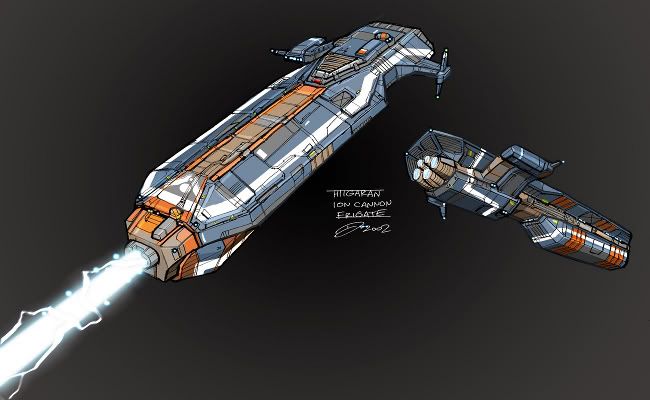 14. Pyro-class Destroyer
14. Pyro-class Destroyer
The
Pyro-class Destroyer is probably the HCN's signature vessel, universally associated with the HCN and with the Hiigaran peoples in general. For main armament, the
Pyro carries a single spinal version of the largest ion cannon in the HCN arsenal. The ship's armor and engines are built around it. However, these ships lack any other capital class weaponry, and has only a handful of point defense to deal with strike craft. This is why they are rarely deployed alone and usually with
Buckler-class Destroyers attached as escorts to an
Annihilator Squadron.
Combat Capability: 50 S-W
15.Buckler-class Destroyer
The
Buckler-class Destroyer is essentially a destroyer-weight version of the
Shield-class Flak Cruiser. Due to it's smaller size, the
Buckler is generally deployed to act as escorts for cruiser squadrons, or with
Pyro-class Destroyers, which are more effective against capital ships than the
Buckler.
Combat Capability: 45 S-W
16. Interceptor-class Frigate
The
Interceptor is a newer warship that has only been constructed in small numbers so far. However, the need for anti-piracy patrols and the fact that the
Interceptor's high-performance drive lends it to those kinds of actions means that the HCN will most likely be aquiring significant numbers of these vessels.
Combat Capability: 30 S-W
17. Morgan-class Corvette
The workhorse of HCN anti-piracy operations, the
Morgan-class is being built up at a rapid rate. With the introduction of the
Interceptor-class to reinforce them, the
Morgan-class will remain the scourge of pirates in the Outback and the former Outlander Commissions.
Combat Capability: 25 S-W
18. Burner-class Customs Corvette
Rarely seen outside Hiigaran systems, these vessels are in charge of running down smugglers and assisting transports. Essentially they act as space cops.
Combat Capability: 20 S-W
2. Review of current doctrinal procedures for current HCN vessels.
Doctrine for current HCN assets divides all assets between four fleets: Home Fleet, 1st Fleet, 2nd Fleet and 3rd Fleet. Each fleet covers a specific area of operations and has been tailored to their environment. Home Fleet, for example, contains all of the
Burner-class Customs Corvettes because of its responsibility for internal control and policing of all seven sectors belonging to Hiigara.
Annihilator squadrons are usually deployed where the High Admirals feel their presence is needed most. Most combatants are organized into either Battle Groups or Carrier Groups. Both Carrier and Battle Groups are composed of Task Forces and Battle Lines.
1. Task Forces are comprised of either:
1. Sector Command Ship | Strategic Carrier
2. 2x Fleet Carriers | 1x Fleet Carrier and one Battleship
3. 4x Battlecruisers | 1x Heavy Cruiser and 2x Battlecruisers
4. 2x Missile Cruisers | 2x Flak Cruisers and 1x Missile Cruiser
2. Battle Lines are comprised of either:
1. Sector Dreadnought | Flag Dreadnought
2. 1x Dreadnought and 1x Escort Carrier
3. 1x Battleship and 2x Battlecruisers
4. 2x Flak Cruisers and 1x Missile Cruiser
4. Projections and suggestions for the HCN over the next 5 years.
1. New vessels to counter emerging threats.
1. Carrier Doctrine and Strike Craft
Currently the HCN employs two different carrier types, the Fleet Carrier and the Strategic Carrier. The concept behind the division between Fleet and Strategic carriers is simple. Strategic Carriers provide a flexible force that can launch “BVR” attacks across light-year distances, without risking expensive capital and supercapital vessels. The Fleet Carriers, in addition, are tasked with escort duties.
Unfortunately, the current carriers are not capable of meeting the intended goals. The current strike craft fielded by the HCN are quite capable of fulfilling the close escort role, but with the exception of the
Avenger-class bomber none of them are capable of launching strikes on targets through hyperspace.
New construction is to include hyperspace capable escorts for bomber formations, and new ultra-heavy hulled carriers to take on the role of strategic carrier. Current Strategic Carriers will be re-classified as Fleet Carriers and will take up the fleet carrier role with the Task Force structure. Current Fleet Carriers will be re-classified as Escort Carriers and maintain their current role in the Battle Line. Current non-hyperspace capable craft will be transferred to the Escort Carriers that are due for completion in 3401, while new FTL-capable fighters will be constructed and deployed aboard Fleet and Strategic Carriers.
2. Battle Line Doctrine and Designs
Current Battle Line units are considered to be filling their roles in a superior fashion. This report does not feel that new line designs are required (see sec. 4), however it is the opinion of this report that a larger number of current vessels are desperately required to keep Hiigara safe in these turbulent times.
2. New doctrine to maximize effectiveness of current units.
We reccommend a formal establishment of cruiser squadrons based around the
Annihilator-class. This will become increasingly important as new cruisers and destroyers are added to the fleet, offering formal organizational support for medium and light starship operations. We expect this to offer considerable improvements over the current
ad hoc system.
3. Exploration of possible designs to specifically counter enemy warships with an SCCC rating over 1000.
The number of vessels that have an S-W rating in excess of 700 is fairly high and predicted to only grow over the next several decades. The presence of vessels with a S-W rating well in excess of 9,000 is especially troublesome.
We currently have the technology to create warships large enough to break into the 1,000 point range: issues of hull size and durability in this range are solved problems for HCN engineers. But we do not have the capability at this time to arm such ships in an efficient manner: all current proposals revolve around impractically large arrays of the existing ion cannons. This has a number of practical drawbacks from a design standpoint, mostly stemming from the need to give the ships an extremely broad frontal aspect to accomodate the main battery.
However, the Umerians have proven that it is possible to create a dreadnought-sized ion cannon capable of putting significantly higher power on target than our current designs, on gun for gun basis. It is the belief of this report that with the Umerians' help, ships rated at over 1,000 S-W could be constructed with a higher degree of cost-effectiveness, and without the need for a large frontal aspect and the undesirable features stemming from this.
We propose that the Umerians be approached with an offer to enter into a joint construction program: we build the ships and they build the cannons. As part of the program, we can help them with the engineering difficulties of crafting multi-kilometer vessels: HInt's assessment of their current battleship designs suggests that their layout reflects a failure to address some of these challenges. At the same time, we can learn from them about the design details of higher-energy, tighter-focused ion cannons designs than the ones currently in HCN service.
[End Report]
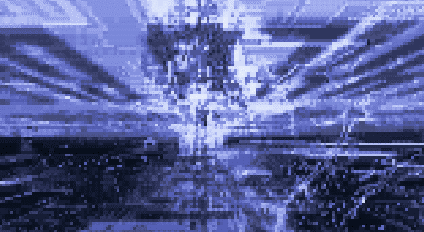








 "
"





